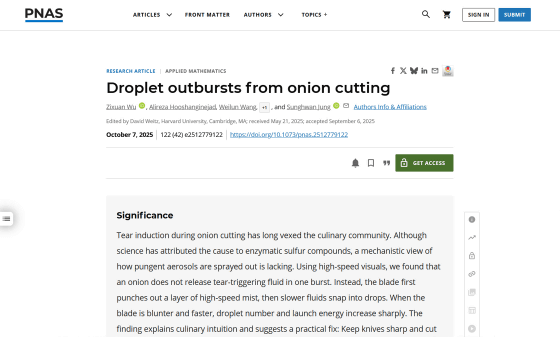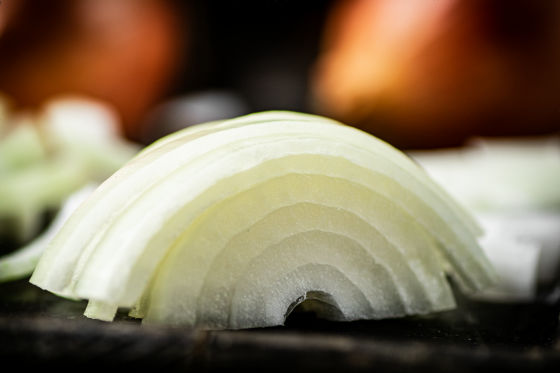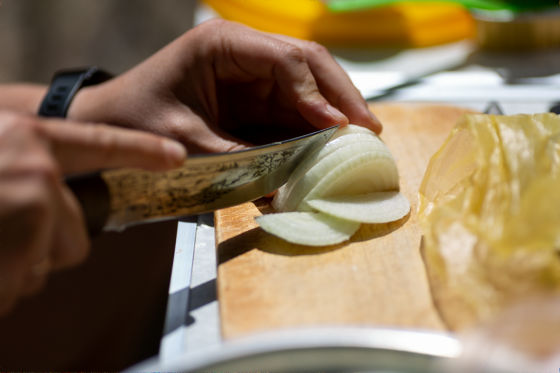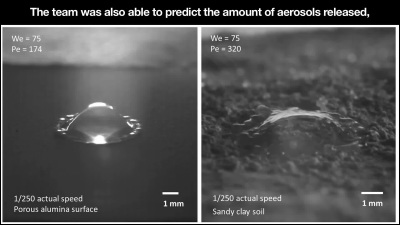Scientists discover a way to reduce tears produced when cutting onions

When you cut an onion, the cells are destroyed, and enzymes synthesize and release volatile tear-inducing compounds, causing tears to flow from your eyes. A research team at Cornell University in the United States has discovered a way to minimize the amount of tears produced when cutting onions.
Droplet outbursts from onion cutting | PNAS

Physicists determine how to cut onions with fewer tears
https://phys.org/news/2025-05-physicists-onions.html
'Mist opportunity' reveals how onions make cooks cry | Cornell Chronicle
https://news.cornell.edu/stories/2025/10/mist-opportunity-reveals-how-onions-make-cooks-cry
Previous research has revealed that the substance syn-propanethial-S-oxide is responsible for the tearing that occurs when cutting onions. When onion cells are destroyed during cutting, an enzyme called allinase produces sulfenic acid , which is then converted to syn-propanethial-S-oxide by lachrymatory factor synthase.
This syn-propanethial-S-oxide is released into the air as an aerosol , which then reaches the eyes, causing tears. However, the mechanism by which the aerosol is released from the onion and the factors that affect the amount of liquid released have not yet been elucidated.
The researchers used a special cutting device that could be fitted with various blades, and then used high-speed cameras and computer models to film and analyze the process of cutting a painted onion. They also used different blade sizes, sharpness, and cutting speeds to cut the onion multiple times. They also examined the knives under an electron microscope before using them.

The results of the experiment showed that when a blade is pressed against an onion, the cells in each layer are crushed, and when the blade penetrates the epidermis of the layer, the pressure within the layer is released, causing tiny droplets to spray out at a speed of 5 to 40 meters per second. Considering that a professional chef slices an onion at a speed of about 1 meter per second, this suggests that the speed at which onion juice sprays out is quite fast.
'We found that the speed at which the mist is ejected is much faster than the cutting speed of the blade,' said study co-author
The experiment found that the amount of juice that sprayed out when cutting an onion and the severity of the irritation to the eyes were related to the sharpness of the blade and the speed at which the onion was cut. The sharper the blade and the slower the cutting speed, the less liquid splashed out.
A dull knife presses down harder on the onion layers, releasing more pressure as you cut, causing the juices to spray out faster. And the faster you cut, the more juices are released, which ultimately creates more aerosols and increases the chances of tears.
The research team concluded that if you want to avoid tears when cutting onions, you should use a sharp knife and try to cut the onion as slowly as possible.

The research team believes that the results of this study may be useful in preventing the spread of bacteria in kitchens. Onions can contain pathogens, and in the United States in 2021, onions contaminated with Salmonella caused a large-scale food poisoning outbreak, and in 2024, onions contaminated with E. coli were used at McDonald's, resulting in one death.
What caused the mysterious food poisoning outbreak in 37 US states? - GIGAZINE

'Let's say there's a pathogen in the top layer of an onion. When you cut the onion, the pathogen gets engulfed in droplets and can spread from there,' Yoon said.
Related Posts:







